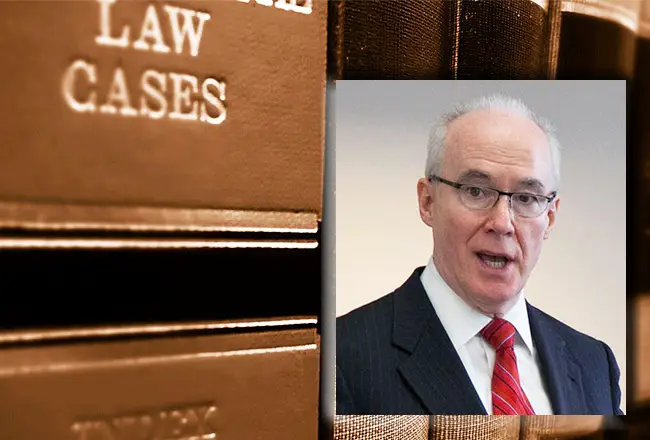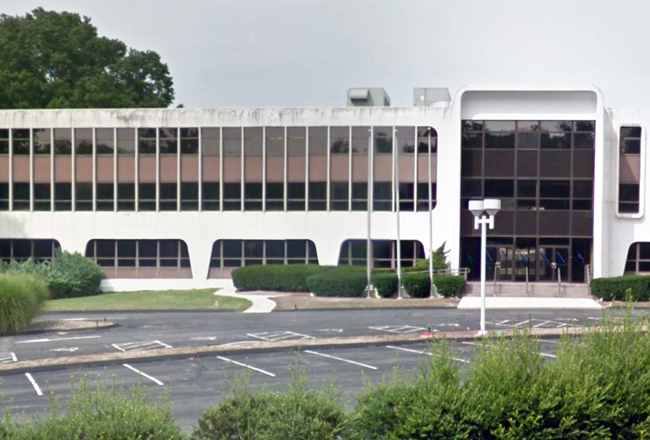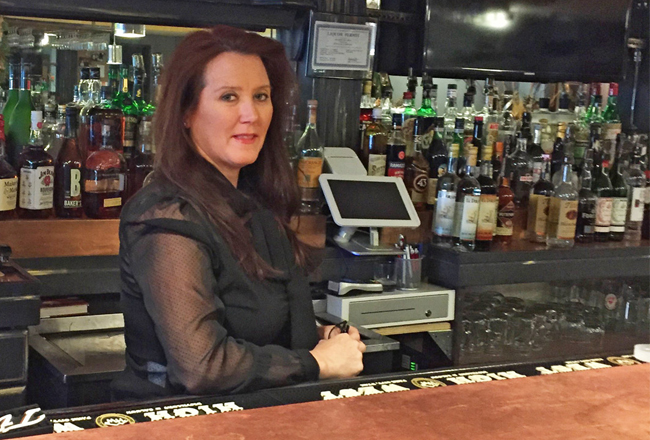The on-and-off vote on a bill that would establish trucks-only tolls on 12 bridges around Connecticut is off again.
Or maybe it isn”™t.
 Late yesterday afternoon, Gov. Ned Lamont lambasted his fellow Democrats for their apparent unwillingness to set a date to vote on the bill, which proponents estimate would raise about $175 million in annual revenue.
Late yesterday afternoon, Gov. Ned Lamont lambasted his fellow Democrats for their apparent unwillingness to set a date to vote on the bill, which proponents estimate would raise about $175 million in annual revenue.
Senate President Pro Tem Martin Looney, D-New Haven, has been uncertain about whether the Senate or House should vote on the bill first ”“ he had floated the idea of each chamber voting on six of the bridges simultaneously, then exchanging those bills for another round of voting ”“ and whether the Democrats even had the needed votes in the Senate to pass the legislation.
Democrats hold a 91-60 majority in the House and a 22-14 majority in the Senate. Looney believes he can count on just 18 Democrats to vote in favor of the bill, which if accurate would result in an 18-18 tie that would be broken by Lt. Gov. Susan Bysiewicz, who is in favor of tolls.
Democrats were also hesitant to go up against the Republicans”™ threat of a 30-hour filibuster during the short legislative session.
House Speaker Joe Aresimowicz, D-Berlin, said he had hoped to call a vote next week, but was reluctant in the face of the Senate”™s dilemma.
The governor ”“ whose own position on tolls has evolved from a trucks-only option to one for all vehicles, then back to trucks-only ”“ said at a press conference yesterday that as a result of his frustration, “I think it’s time to take a pause” on the issue.
“Don”™t say, ”˜I can”™t make up my mind, I need another week, I need another week, I need another week”™,” Lamont said, referring to the many times a scheduled vote has been delayed. “I”™ve heard that for a year and I”™ve lost patience.”
The governor said the capital “is a place that specializes in kicking the can down the road, and I don”™t accept it.”
“I think you are elected to make choices,” he continued. “And if we make good choices, we really get this state going again. You”™re not elected to say, ”˜I can”™t make up my mind”™ or ”˜I don”™t want to vote this week, I want to vote next week”™ and just push it off ”” something we”™ve done in this building for a generation.”
Lamont said he planned to pursue alternate funding for much-needed maintenance and improvements to the state”™s roads and train system, which would likely involve taking $200 million out of Connecticut”™s general obligation bonding ”“ money that would in effect be repaid, with interest, by state taxpayers.
However, following the governor”™s remarks, Looney and Senate Majority Leader Bob Duff, D-Norwalk, issued a joint statement saying that, “We are still confident that Senate Democrats have the votes to pass a comprehensive transportation plan which includes 12 toll gantries on eighteen-wheeler trucks only. We are prepared to hold a session next week to vote on a bill to make the necessary transportation investments for Connecticut”™s economic development, residents, and businesses.”
Rep. Steve Stafstrom, D-Bridgeport, told the Business Journal that “there are a number of us in the legislature who are frustrated by the fact that the bill has not come up for a vote yet.”
Stafstrom further said that toll opponents had “turned the argument on its head” by suggesting that the trucks-only toll approach would cost state residents more money than proponents have estimated.
The bonding approach “is money that Connecticut residents have to pay back 100%, with interest,” he said, “as opposed to putting a user fee on large trucks, most of whom are coming from out of state, which do significant damage to our roads.”
The situation “is kind of crazy to me,” Stafstrom said.
Rep. Stephen Meskers, D-Greenwich, also expressed surprise at the governor’s move.
“To the best of my knowledge, we had more than adequate votes in the House to pass it, and my understanding was that we had more than adequate votes in the Senate as well,” he told the Business Journal.
Meskers said he was also surprised by Looney’s gambit of “dividing the bill into halfsies” by having each chamber vote on six of the 12 bridges, then exchanging those bills.
The Greenwich Democrat echoed Stafstrom’s concerns that taking additional money from the General Fund and/or bonding would “place the burden squarely on the shoulders of Fairfield County residents.
“The Republicans’ argument seems to be that we can afford it, therefore we should pay for it all,” rather than rely at least in part on out-of-state drivers’ contributions, Meskers said — a move he called “fiscally irresponsible.
“Spending other people’s money effectively would be better than spending our own,” he declared. “As a Connecticut resident. I would rather have us pay about 50 cents of every extra dollar toward better roads and rails and not the full dollar. That is just common sense. Spending wisely is paramount and hand-outs (free rides) to non-resident travelers just doesn”™t fit that criteria.
“I am alarmed that the Senate appears unable to grasp that issue,” Meskers continued, “and I hope my colleagues there will reconsider their position.”
As for concerns that instituting tolls would have an effect on the cost of goods in Connecticut, Meskers pointed to a report by the European Federation for Transport and Environment stating that “the impact of the toll on actual product prices is so small that aggregated statistics cannot show an effect.”
Meskers and Stafstrom both noted that, as House members, they are not privy to the machinations of the Senate’s deliberations. “I honestly do not know the way we go forward,” Meskers said.
Stafstrom said he still hopes there is sufficient political will “to get this across the finish line.”
Meanwhile, across the state border, Westchester County Executive George Latimer and New York State Senators Pete Harckham, 40th, and Shelley Mayer, 37th — all Democrats — welcomed the news that Connecticut appeared to be abandoning tolls, especially the one proposed for a 1.4-mile stretch of I-684 that passes through Greenwich but which is actually located in New York State, which turned into a lightning rod of controversy.
“My Administration ”“ and my colleagues in government ”“ had serious issues with this plan from its inception and even took our case to the Connecticut State Capitol to make those issues clear,” Latimer said. “I look forward to continued work with our colleagues in the State of the Connecticut in the future on other issues of joint concerns.”
Harckham ”“ who had floated the idea of installing tolls in New York specifically targeted at Connecticut drivers in retaliation for the I-684 gantry ”“ said Lamont”™s “decision to abandon his plans ”¦ is welcome news for New York residents and business owners who”™d feel the unfair, added costs of travel in the region. Still, it is imperative that high-level discussions take place regarding regional transportation issues.”
Mayer ”“ who with Harckham, Assemblymen David Buchwald, D-93rd and Kevin Byrne, R-94th, wrote to Lamont in November protesting the 684 component ”“ thanked “the many elected officials and advocates who made it clear that a CT toll on I-684 would disproportionately impact New Yorkers and would be an inappropriate way to make infrastructure policy.
“We share a commitment with Governor Ned Lamont to improve road and rail infrastructure,” Mayer added, “and we hope to work collaboratively in the future on making these improvements.”
For all the apparent certainty in Westchester that the issue is completed, however, Connecticut Senate Minority Leader Len Fasano, who led the Republican charge against tolls, indicated the jubilation could be short-lived.
“Nothing”™s dead in this building,” he told NBC New York. “Back up again this session? I might be a little bit surprised. Back up again in 2021, I think you could probably bank on it.”



















